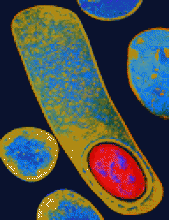Although generalizing evidence for planned cesarean from one indication to another is problematic, we do this when evidence is lacking. For example, some use the results of the Term Breech Trial, which found better outcomes with planned cesarean for singleton breech fetuses at term, to justify planned cesarean section for twins if one of the twins is in breech position.1 Contrary to the suggestion of John Fernandes, the issue is not consumerism, cost or cosmetic surgery; rather, it is a woman's choice after discussion of the risks and benefits of all reasonable alternatives.2
Padmanabhan Badrinath and Penny Lindballe agree that a woman should be able to choose how she will deliver her baby. Badrinath raises concerns that planned cesarean sections will add to the cost of health care. However, planned cesareans may actually be associated with lower costs.3 Lindballe suggests that women should be able to choose midwifery care and that health care plans should cover this option too. I agree. Planning for a vaginal birth might be a more attractive option for Canadian women if midwifery care were more readily available and affordable.
Planned cesarean and planned vaginal birth are not associated with equivalent outcomes, and most women are likely to place a higher value on the benefits of planning a vaginal birth than on the risks. However, my plea is that we also respect and honour the views of the women who place a higher value on the risks, preferring instead to plan a cesarean procedure. I agree with Michael Klein that most of the research concerning risk of urinary incontinence has examined such risks over the short term and that an elective planned cesarean does not prevent all incontinence. However, overall, the current evidence indicates that elective cesarean is associated with a lower risk of incontinence than vaginal delivery. Klein infers that the benefits of interventions during labour and delivery, such as induction, are not sufficiently adequate to justify their widespread use. Surely this is a judgement for the woman and her physician or midwife to make. Also, research suggests that most women are extremely “fetal risk averse” and would choose cesarean section if this could prevent even a very small increased risk of stillbirth or neonatal death.4 I find it surprising that Klein estimates it would take up to an hour to inform a woman about her options for delivery. However, if this is true, consideration should be given to developing a patient information sheet detailing the options, along with their risks and benefits.
Selon Catherine Gerbelli, l'accouchement vaginal spontané à la maison serait peut-être plus physiologique que l'accouchement vaginal spontané à l'hôpital. J'en conviens, il faudrait signaler cet avantage éventuel, en même temps que les risques éventuels, aux femmes qui envisagent d'accoucher à la maison.
It is quite likely that only a small minority of women will choose a planned cesarean, but those who do so make the choice for reasons that are important to them. According to them, the opportunity to exercise that choice is consistent with the ethical principle of patient autonomy, which has largely replaced the paternalism so long associated with the provision of obstetric care.
Mary E. Hannah Professor, Department of Obstetrics and Gynaecology Sunnybrook and Women's College Health Sciences Centre University of Toronto Toronto, Ont.











